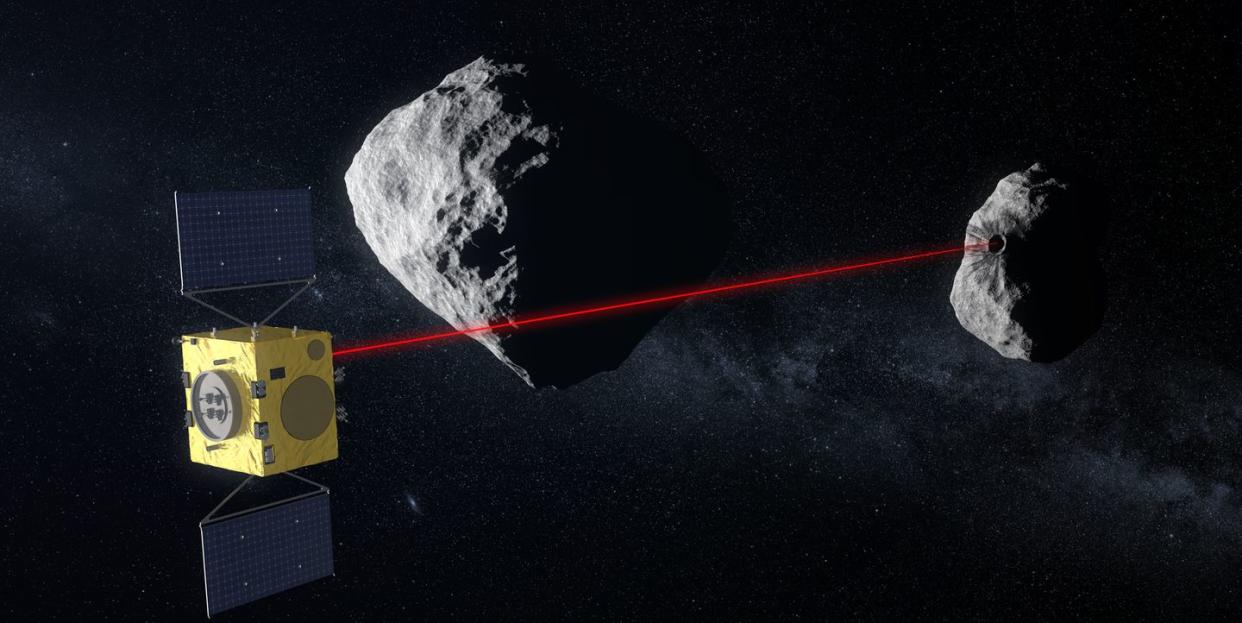New Spacecraft Will Head to Binary Asteroid

The solar system is full of giant asteroids hurtling around, and even though space is big and mostly empty, there’s a decent chance that some of those asteroids are on a collision course with the Earth. If a large enough asteroid hits the Earth in the right spot, it could wipe out millions of people, which is why it’s so important to learn how to prevent asteroid impacts.
Over the next decade, both NASA and the European Space Agency (ESA) will take the first steps toward a defensive plan against asteroids. NASA will launch their DART probe in 2022, which will crash into a nearby asteroid in an attempt to change its trajectory. And in 2026, ESA will launch their own probe to study the results of the impact up close.
ESA’s Hera probe will launch to a binary pair of asteroids that regularly pass close to the Earth. This binary pair consists of one large asteroid, nicknamed Didymos, and one smaller asteroid, nicknamed Didymoon. Around 25 percent of the asteroids in the solar system are binary pairs like Didymos and its companion, but none have ever been visited by a spacecraft before.
When Hera arrives at these asteroids, they will already have been altered by the DART impact in 2022. As part of its mission, Hera will study the impact crater and the changes to the asteroid’s orbit. In addition, Hera will map out the smaller of the two asteroids in high detail using lidar technology.
The goal is to pioneer several new methods of surveying asteroids, as some of the traditional methods don’t work in a binary system. For instance, ESA’s earlier Rosetta spacecraft visited a comet named 67P/Churyumov–Gerasimenko, and measured its mass by determining how the comet affected the spacecraft’s orbit. With a binary asteroid pair, however, this technique won’t work because it will be impossible to separate the gravitational effects of the two asteroids.
Instead, Hera will watch the larger of the two asteroids very closely, picking out several distinguishing landmarks and watching how those landmarks shift in response to the other asteroid’s gravity. With this new technique, future missions to binary asteroids will be much more successful.
To top it off, Hera will also carry two small CubeSats, which will be deployed to test various science instruments as well as new communication technologies. Hera will be tasked with communicating with ground stations on Earth as well as its smaller satellite companions as a precursor for potential future deep space missions.
All of this means that Hera will benefit our understanding of binary asteroids along with advancing our planetary defense technology while operating in deep space. It's a lot for one spacecraft to accomplish, but it's almost certainly up for the task.
Source: ESA
You Might Also Like

